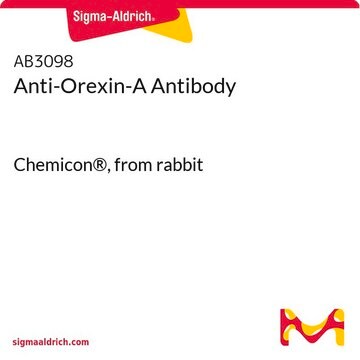SRP2161
Androgen Receptor human
recombinant, expressed in insect cells, ≥70% (SDS-PAGE)
Synonym(s):
AIS, DHTR, HUMARA, HYSP1, KD, NR3C4, SBMA, SMAX1, TFM
Sign Into View Organizational & Contract Pricing
All Photos(1)
About This Item
UNSPSC Code:
12352200
NACRES:
NA.26
Recommended Products
biological source
human
recombinant
expressed in insect cells
Assay
≥70% (SDS-PAGE)
form
frozen liquid
mol wt
~100 kDa
packaging
pkg of 5 μg
storage condition
avoid repeated freeze/thaw cycles
concentration
100 μg/mL
color
clear
colorless
NCBI accession no.
UniProt accession no.
shipped in
dry ice
storage temp.
−70°C
Gene Information
human ... AR(367)
General description
Androgen receptor (AR) gene is mapped to human chromosome Xq11- Xq12 and contains PGK1P1 pseudogene. AR gene is extended over ~5-10 million bp of genomic DNA.
Biochem/physiol Actions
AR (dihydrotestosterone receptor); testicular feminization; spinal and bulbar muscular atrophy; Kennedy disease. The androgen receptor is an androgen-activated member of the nuclear receptor superfamily of transcription factors. Signaling by the androgen receptor plays a key role in proper development and function of male reproductive organs. The androgen receptor gene is more than 90 kb long and codes for a protein that has 3 major functional domains: the N-terminal domain, DNA-binding domain, and androgen-binding domain. The protein functions as a steroid-hormone activated transcription factor. Upon binding the hormone ligand, the receptor dissociates from accessory proteins, translocates into the nucleus, dimerizes, and then stimulates transcription of androgen responsive genes. This gene contains 2 polymorphic trinucleotide repeat segments that encode polyglutamine and polyglycine tracts in the N-terminal transactivation domain of its protein. Expansion of the polyglutamine tract causes spinal bulbar muscular atrophy (Kennedy disease). Mutations in this gene are also associated with complete androgen insensitivity (CAIS). Two alternatively spliced variants encoding distinct isoforms have been described. The androgen receptor (AR) has been shown to play a critical role in the development and progression of the prostate cancer.
Physical form
Clear and colorless frozen liquid solution
Preparation Note
Use a manual defrost freezer and avoid repeated freeze-thaw cycles. While working, please keep sample on ice.
Storage Class Code
10 - Combustible liquids
WGK
WGK 1
Flash Point(F)
Not applicable
Flash Point(C)
Not applicable
Certificates of Analysis (COA)
Search for Certificates of Analysis (COA) by entering the products Lot/Batch Number. Lot and Batch Numbers can be found on a product’s label following the words ‘Lot’ or ‘Batch’.
Already Own This Product?
Find documentation for the products that you have recently purchased in the Document Library.
Androgen receptor locus on the human X chromosome: regional localization to Xq11-12 and description of a DNA polymorphism.
Brown CJ
American Journal of Human Genetics, 44, 264-269 (1989)
Elliot R Cooper et al.
Drug testing and analysis, 13(5), 903-915 (2021-03-13)
Androgens remain abused performance-enhancing drugs in sports. Technologies based on mass spectrometry can detect all forms of androgens but fail if the androgen represents a novel structure. A bioassay detects androgens based on function rather than structure. To date, there
Shalini Murthy et al.
The Prostate, 64(4), 362-372 (2005-03-09)
1,25(OH)2D3 inhibits the growth of prostate cancer cells; previous reports suggest that 1,25(OH)2D3 actions in LNCaP prostate cancer cells are androgen dependent. This is due in part to the observation that the androgen receptor (AR) antagonist, Casodex, modestly inhibits LNCaP
Eric Metzger et al.
Nature, 437(7057), 436-439 (2005-08-05)
Gene regulation in eukaryotes requires the coordinate interaction of chromatin-modulating proteins with specific transcription factors such as the androgen receptor. Gene activation and repression is specifically regulated by histone methylation status at distinct lysine residues. Here we show that lysine-specific
Rute B Marques et al.
International journal of cancer, 117(2), 221-229 (2005-05-19)
To study the mechanisms whereby androgen-dependent tumors relapse in patients undergoing androgen blockade, we developed a novel progression model for prostate cancer. The PC346C cell line, established from a transurethral resection of a primary tumor, expresses wild-type (wt) androgen receptor
Our team of scientists has experience in all areas of research including Life Science, Material Science, Chemical Synthesis, Chromatography, Analytical and many others.
Contact Technical Service








